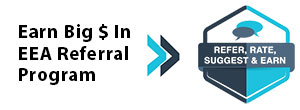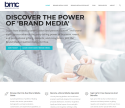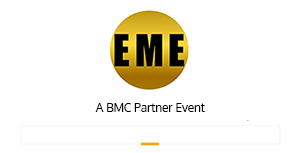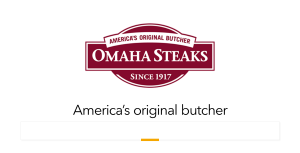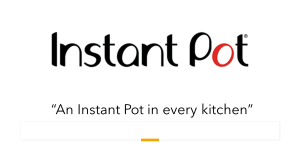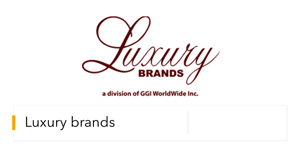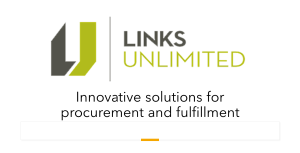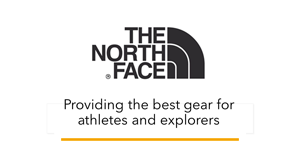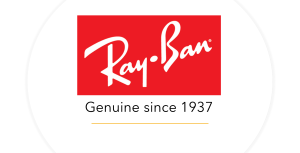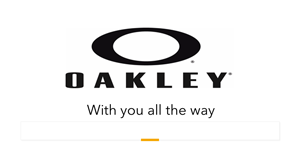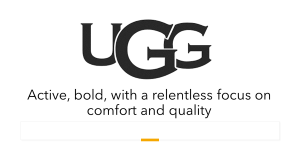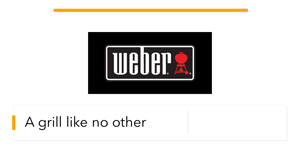Industry Primer for Management: Can Your Brand Profit From the IRR Market?
Does your CEO and CMO know that organizations spend $176 billion or more on brands for use in business, event, and promotional gifting, rewards and recognition programs that provide invaluable brand exposure and incremental business that most brands consistently overlook or undervalue? Rewards and recognition are one part of an estimated $500 billion market for stakeholder engagement solutions ranging from brand architecture, business operating systems, assessment and feedback, to job design, communications in every media, learning, social recognition and rewards, incentive and loyalty programs, DEI, (diversity, equity, inclusion), innovation, analytics, reporting, and more.
Here’s a comprehensive guide to the IRR market for chief marketing officers, CEOs or business owners to help determine if your brand and products and services have what it takes to succeed in the emerging world of engagement and rewards and recognition in business, event, promotional gifting and rewards, and motivational meetings. This guide is published as part of the Enterprise Engagement Alliance Brand Engagement initative, supported with oversight from an IRR (Incentive, Rewards, and Recognition) Advisory Council to promote more strategic and measurable processes. Click here for a deck that provides an executive summary of this report.
Click here for solution providers committed to education and effective practices in the IRR field.
Click here for the table of contents for the ANA IRR industry content center.
Click here for the table of contents for the ANA Brand Engagement 360 content center.
Click here for solution providers committed to education and effective practices in the IRR field.
Click here for the table of contents for the ANA IRR industry content center.
Click here for the table of contents for the ANA Brand Engagement 360 content center.
By Bruce Bolger, Founder, Brand Media Coalition,
- This report is written for CEOs and CMOs seeking new markets that leverage a company’s brand equity; however, it provides an overview of the field useful to anyone seeking to create, invest in, purchase from, or work for in the IRR field.
- The Incentive, Rewards, and Recognition business is a measure of the value of a brand’s ability to generate significant revenue and profits based on the desire of another organization to use its products and services to thank, motivate, or reward its stakeholders.
- Brand Media, the use of brands in reward programs, is a source of valuable brand exposure for any brand, company or service that other organizations can use to transparently and meaningfully thank, reward, inspire, or enrichen the lives or businesses of key stakeholders.
- IRR sales can generate at least 5% to 10% of overall sales and in some cases more and provide valuable exposure for which your organization is paid.
- The field has a low cost of entry and is easily tested with many reliable solution providers.
- The biggest risk is improper use of or distribution of your brand or unrealistic expectations about the length of time between getting into a program and actually experiencting redemptions.
- The 120-year-old IRR market is undergoing major growth in the era of one-to-one engagement and relationship building.
Imagine if organizations regularly called your sales organization; went to your web site or bought your products at retail specifically to motivate their customers, employees, vendors or communities? What if your brand had such perceived value that other organizations wanted to buy your products or services to market your brand as a reward or gift to their most critical audiences in ongoing multi-media campaigns in print, online at events; or, to pay your company to set up a boutique at one of its most critical events to use your product or service as a gift or reward, or have it engraved or pad-printed so that people would be encouraged to use and value your brand for years or more? This happens every day in the $176 billion market for business gifts and rewards.
Simply because most chief marketing officers, let alone business people in general, have never heard of the market, many companies overlook what companies like Yeti, S’well, Bulova, Marriott, Virgin and dozens of leading brands and retailers know: the corporate market for the use of brands as a business, event, gift, or reward media provides the best possible form of marketing exposure: the endorsement by other organizations that your products are worthy of a reward or gift they are happy to pay for to thank or reward people for performance. While many CMOs direct their staffs to give away products for contests and sweepstakes or product placements on television and movies in return for ephemeral exposure, they ignore the far more tangible, beneficial and sustainable strategy of selling their products and services as Brand Media. This is even more important in an era in which most traditional distribution channels have broken down.
The IRR business provides a new way for CEOs to prove the value of their brand equity. The more powerful your brand either nationally, or in your community or trade, the more you can leverage it in the field of Brand Media. Companies say they can’t measure the dollar value of their brand equity? How much others are willing to spend to leverage that brand equity certainly is one tangible method.
For an overview of why Citizen Watch America considers the corporate market core to its business, click here for this case study featuring Citizen Watch America's CEO Jeffrey Cohen.
[return to top]
For an overview of why Citizen Watch America considers the corporate market core to its business, click here for this case study featuring Citizen Watch America's CEO Jeffrey Cohen.
[return to top]
What Is the IRR Field
The IRR field is the 21st-century name for what was known in the last century and still by many in the trade as premiums and incentives. This is a name which perhaps has helped relegate the field to the underbelly of marketing because it minimizes the powerful role brands can play in helping other brands tell their stories in business, loyalty, event, and promotional gift and rewards and because its use over the past decades has done little to enhance the field’s visibility or legitimacy. (See report, “The Untapped Power of the New Brand Media.”)
Brand media is the use of brand name products and services specifically to thank, award, and enable target audiences as part of strategic and systematic approach to engaging all stakeholders, customers, employees, distribution partners, vendors, communities, donors, volunteers, or just about anyone whose engagement can help an organization. These can include print and online catalogs, individually selected brands, gift and e-cards, e-codes, travel and other experiences, most people have been offered over their lives as customers or employees.
The issue of media comes into the definition because each brand in fact tells a story that when selectively used and promoted in a gift, promotion, or award program helps other brands tell their story. Example: a young software startup specifically gives out an Apple-branded product at a user meetup as part of an incentive to create a crowd-sourcing platform, etc., despite the fact it could find an off-brand alternative for 30% less. Yet, unlike in the field of advertising, where the selection of media brands is given so much consideration there are vast databases on media platform demographics, the issue of brand media is often driven by gut or hunch even though it usually involves an organization’s most important stakeholders. See “The Untapped Power of Brand Media.”
An underlying principle for the IRR field is the importance of fun as a means of engaging people; multiple research studies indicate that both fun and a sense of community are critical to creating a culture of sustainable engagement. Other principles that can be addressed through IRR programs are capability, emotion, support, and task value.
The role of Brand Personality. A key foundation on Brand Media theory is the concept of Brand Personality highlighted in “The Untapped Power of Brand Media.” Developed by Dr. Sharon Aaker, a Stanford University business professor, but supported by others as an underlying element to successful brands, the concept of Brand Personality suggests that each brand tells a story that is either deliberate—the result of a CEO or founder-driven vision, or is accidental, the consequence of a lack of vision related to the importance of establishing a clear brand personality based on authentic values. Organizations obtain the best results from their use of gift and award programs when they carefully consider how they can select the right brands to most powerfully resonate with the audience with whom they wish to reinforce their own brand story.
Would anyone think of bringing a bunch of financial executives to a budget hotel off a highway in an industrial area for an executive retreat (except if to make a special point), or offering vintage wine as the safety award on a construction site right after a hard day in the hot sun unless the crew happened to be wine aficionados? Yet even though gifts and awards have the highest impact and cost-per-thousand of any engagement tactic, many if not most organizations assume that their hunches on program design and reward selection alone suffice. See: IRF’s 2019 Voice of the Market: The Use of Non-Cash Rewards and Recognition.
[return to top]
[return to top]
The Applications for Rewards
Organizations use brands in all sorts of internal, B2B, B2C, workplace and hospitality amenities, employee, and fund-raising applications, including:
- Gifts for boards, guests and delegations, events and experiences, customers, distribution partners, donors and volunteers, not to mention gifts used at the highest levels of diplomacy.
- Hospitality, workplace amenities and perquisites. The brands you see in your lunchrooms, board rooms and even workplace areas should be purchased from the corporate channel to benefit from expertise, value, customization and personalization, and with a thought to which brands align with the values of your own organization.
- Rewards or gifts for customers or for use in promotions or events.
- Loyalty programs for consumers, business partners, and other communities.
- Incentives and recognition for distribution partners, sales and non-sales employees, vendors, donors, and volunteers.
- Prizes for sweepstakes and contests and related consumer promotions, or fund-raisers.
- Equipment donated for sporting events, clean-up efforts, volunteer home-building or restoration projects, etc.
- Cross-selling and added-value programs, especially in business-to business. For instance, a marketing agency might offer a discount on the services of a third-party analytics platform that will drive greater value or ROI.
Almost always, without much application of science or data, these brands and gifts are picked to appeal to the target audience and are marketed specifically to communicate their value as a form of appreciation. Given that the above tactics are used to motivate over 100 million households and over 150 million employees as of 2019, that’s a huge amount of exposure for which participating brands not only pay nothing but for which the are paid.
Why So Few People Have Heard of a $176 Billion Industry
Any CEO or CMO considering this new business would have to wonder how he or she had never heard of it before?
Despite the fact that one of the industry’s trade publications, Incentive, has been in continuous publication since 1901 (except for brief pauses during the two world wars and now only online), few business people know that a separate field exists currently still known by insiders as the premium and incentive business with estimated sales of $176 billion per year. (Of this, perhaps $50 billion is spent by credit card and related financial institutions alone, with perhaps as much as 50% of it or more moving ad hoc through retail.) This is because something is wrong with the industry’s current strategy: despite having one trade association known as the Incentive Marketing Association with about 500 company members, some representing the world’s best known brands; another known as the Society of Incentive and Travel Executives with as many if not more brand-name members in the travel field, ask anyone in business outside of an industry event if they have ever heard of the business, and the percentage answering yes is almost zero. Unlike someone in advertising, meetings, medicine, trucking, etc. anyone in this field must explain the field to anyone who asks what they do.
Adding to the irony, almost everyone in management has received or given business gifts, enjoyed workplace amenities, redeemed points in loyalty programs, earned recognition for length of service or other accomplishments, participated in incentive trips, motivational events, or some kind of sales, quality productivity, recognition, or related points-program. How could a field so ubiquitous that touches so many people remain so below the radar screen after so many decades?
There are several answers. The topic is taught nowhere in schools and rarely mentioned in the business media, except perhaps with sarcasm. Unlike with advertising, event marketing, corporate social responsibility, etc., companies in the past have not been anxious to publicize their gift and award programs. With the exception of contests and sweepstakes, event sponsorships, charitable promotions, or the occasional CEO who is proud of and wishes to publicize recognition given to employees, customers and other stakeholders, organizations wanted nothing to do with publicity either for fear that the program will raise eyebrows as a perceived bribe or unsavory gift or because they do not want competitors to know the strategies they consider most successful at moving the needle. As a result, the industry has received little coverage in the general business media except when there is a scandal or when a company gives away a wonderful experience or gift to employees.
In the new era of people focused management, this has begun to change. More companies not only seek out ways to enhance employee experiences, they are more eager to market them as a benefit of being part of their community.
[return to top]
In the new era of people focused management, this has begun to change. More companies not only seek out ways to enhance employee experiences, they are more eager to market them as a benefit of being part of their community.
[return to top]
How Do You Know if Your Brand Is Good Enough?
What is unique about the IRR business is that it enables a brand to quantify to some extent at least the relative value of its brand equity. Companies like S’well, Yeti, Northface, Citizen Watch Company, and many others can put a dollar value on their brand equity by the amount of incremental sales they are generating in the corporate market based on their brand equity, without even mentioning the free marketing and endorsement being provided to their brand. Unlike promotional products, which carry no other brand name but that of the company giving the item, Brand Media products and services carry the name of a brand specifically for the purpose of enhancing the perceived value and telling a story. The more a company sells into this market, the more it says about the actual dollar value of the organization’s brand equity.
So what does your brand need to succeed in this market and find out at least one potential value source in your brand?
1. Is your brand valuable to someone? Would an organization have a need to or interest in offering your product or service as a gift, award, experience, as added value—has anyone every asked about using your product or service in some way to enhance their own? This does not mean your product or service has to be consumer oriented. For instance, a contractor might well enjoy a new high-quality tool as part of an engagement program; a medical office a refrigerator for vaccines; a buy-one get one-free or discounted offer combining a parking space and free oil change. A plumbing supply company could offer a value-added promotion related to solving a practical learning or diagnostics challenge facing plumbers. Brand Media is a way of thinking that personifies your own company’s brands and taps its brand equity and value to help other organizations enhance the value of their brands and achieve their goals.
2. Could this channel represent at least 5% to 10% of your sales? That’s the minimum most but the largest consumer and travel companies do in this business as a percentage of their sales. Again, the first test is to see if your sales or marketing team has ever received any such requests and the second to see if any of your competitors or similar types of companies are active in this space by reviewing the companies you’ll find in the Resources section (if your company is in consumer products, gift cards and travel). Otherwise, look what types of cross-marketing programs you’re seeing in your trade or community. Almost every company gets into the corporate market because of an ad hoc request from a consumer who happens to work for or own a company seeking to use a brand in an engagement program.
3. Does your brand add value and have a good reputation in your market or community? Does your product or service add value or enrich lives or enable business? If a person were to get your product or service for free, would they value it? In other words, yours does not have to be a consumer product, gift card or travel experience to have a role in this market. Yours does not have to be a nationally known brand to succeed in this business. A small chain of car wash companies could leverage a co-marketing program with auto parts stores. In fact, a lucky under-the-radar screen brand could use this industry to catapult to national attention that can bring its consumer business along with it by being featured in a widely marketed national or regional offer.
4. Do you have someone on your team who can oversee the business plan development and launch? Even if your company outsources the management of this channel to a third-party, as many do, you can benefit from an inhouse sales manager or subcontractor to oversee that person or organization and serve as a liaison with the firms to which you outsource the various aspects of the business.
What Is the Upside
For many consumer, gift card, and travel destinations appealing to the corporate market, the IRR market is a significant part of sales, profits, and also is a means offsetting retail seasonality, reducing reliance on retail and e-commerce, and opening up a nonconflicting sales channels that provide free marketing, paid product trial, incremental sales, and positive word of mouth.
What Are the Risks
Because the cost of testing this market is so low in both people or financial resources, the biggest risk for any organization is being sold in to spending too much to test the marketing or having their brand associated with inappropriate brands for the wrong purposes. Other risks to avoid: being sold through undesirable retail or other channels or exported without authorization, etc. Like in any other field that has high value, IRR programs can be perceived as bribes or worse and need to follow the highest principles of transparency and codes of conduct, such as in the financial services, insurance, and health care fields, for example. One of the primary missions of the Brand Media Coalition is to carefully recruit and educate marketing specialists who value these rules as a means of making the programs more effective.
Another risk is potential disruption to your main business. The corporate market has different reasons for purchasing than consumers; different demands and timing and cost considerations, and often seeks exceptions to the rule in terms of how it would like the program customized. For some companies, the trade-offs are simply too much, and even when that is not the case, the specific nature of this business explains why most brands usually work closely with outsourced master fulfillment partners to help with distribution in this field.
[return to top]
[return to top]
IRR Industry Players
Going back as it does well over a century, the industry has an infrastructure of players to which almost all aspects of an IRR division or business can be outsourced, with some cautionary notes covered in Steps to Success. Here are the key marketplace players:
Brand corporate special markets departments. In the past, almost all brands had active inhouse “special markets” departments to handle the corporate business, who sold through incentive representatives, and many still do have these departments and use incentive “reps.” If one seeks to do business with a specific brand, go to the Brand Media Guide or, if it is not yet part of the Coalition, to its consumer web site and check to see either in its navigation tabs and subnavigation, or the web site’s footer, if there is a link to Corporate Sales. Here’s an example of the link to be found for Citizen Watch America Corporate Sales. After the Great Recession of 2008, many brands outsourced this business to companies now known as “master fulfillment companies;” that is, wholesalers or stocking distributors with the ability to maintain inventories of brands and drop- or bulk-ship items redeemed now mostly through online gift, incentive, recognition, loyalty, or fund-raising catalogs. Most brands sell directly through multiple master fulfillment companies; a few, such as Bose, have outsourced corporate sales to a specific master fulfillment companies. This does not mean that one must purchase the product from that master fulfillment company, as others may stock the product as well and could have it available at competitive prices or with support services at the time needed that another fulfillment company cannot provide at the required moment.
Retailers and gift cards. Much of the above applies to retail companies active in the market. For instance, 1-800Flowers.com has a link to corporate gift sales on the header of the site and it employs an inhouse corporate sales team of multiple people. Crutchfield has a separate corporate sales division for its products. Most retailers active in the market focus on selling their gift cards and belong to the Incentive Marketing Association.
Master fulfillment companies. These wholesalers specializing in the corporate market, of which there are no more than several dozen in the U.S., not only stock many of the leading brands and in some cases gift cards for appropriate corporate use, but to varying degrees offer:
- Complete program support, design, technology and implementation in addition to rewards fulfillment. This level of support is offered by only a few of these companies.
- Complete support with merchandise and/or gift card selection, fulfillment, customization and personalization; in some cases, event experience programs in which brands set up boutiques at events from which recipients select their rewards or gifts in custom-fitting purchasing experiences. Another attention-getting promotion is a warehouse run-through, which some of these companies can organize, in which participants are given a shopping cart and a set period of time to select their prizes as seen on some television game shows.
- Complete online (and/or print) catalog creation and curation, procurement and logistics management.
- Sophisticated analytics that provide for more intelligent selection of brands, communications and other program elements based on actual behavioral data generated from the platform. Only a few offer this level of service.
Click here for the master fulfillment companies in the Brand Media Coalition, the early pioneers and industry leaders bringing a powerful new tool to the market. Click here for a listing of every known master fulfillment company and the US with an overview of their services.
To find a complete list of all active companies, click on Resources. Most belong to the Incentive Marketing Association and some to the Promotional Products Association or Advertising Specialty Institute.
Incentive, recognition, and loyalty companies. This is the general designation for solution providers that help companies create sales and non-sales incentive, customer loyalty, and employee recognition programs. Most have evolved from providers of non-cash awards to providers of technology, program design and implementation services, and the largest of them, with sales in the hundreds of millions of dollars in award and services sales, support the gift, awards, and motivational event needs of the world's largest organizations. A complete list is available the EEA's Enterprise Engagement Solution Provider Directory. Click here for a recent market report providing a summary of every known incentive and recognition company in the US.
To find a complete list of all active companies, click on Resources. Most belong to the Incentive Marketing Association and some to the Promotional Products Association or Advertising Specialty Institute.
Incentive, recognition, and loyalty companies. This is the general designation for solution providers that help companies create sales and non-sales incentive, customer loyalty, and employee recognition programs. Most have evolved from providers of non-cash awards to providers of technology, program design and implementation services, and the largest of them, with sales in the hundreds of millions of dollars in award and services sales, support the gift, awards, and motivational event needs of the world's largest organizations. A complete list is available the EEA's Enterprise Engagement Solution Provider Directory. Click here for a recent market report providing a summary of every known incentive and recognition company in the US.
Incentive travel. Gone are the days when many planners of travel for motivational events, incentives, gifting or fundraising at larger organizations didn’t know the distinction between a travel agent and a motivational event planner, but the appreciation for the creative talents required to craft a masterful group or individual travel experience remains low, based on most surveys of end-users. Even though these trips, due to their cost, involve almost always an organization’s most important customers, distribution partners, or employees, companies frequently cut corners without seriously addressing the potential impact on engagement. It’s one thing to make valuable customers or employees wait on hold to get service for 10 minutes; it’s another to subject them to a terrible or inferior travel experience, let alone overlook this unique opportunity to forge a long-lasting emotional bond by making the experience an unforgettable reinforcement of your brand values and relationships.
Almost every leading brand and venue active in the corporate market has a corporate meetings and incentive market. Just check their web sites for a link to group sales. Many specialized in the travel market belong to the Society of Incentive Travel Executives, which has a learning and certification program for the business but does not make its directory available for free to nonmembers.
Incentive Representatives: These consist of regional manufacturers representatives who usually represent about 30 or more brands in a given region. See Resources for a directory. There are only about several dozen or so such companies in the US, and almost all belong to the Incentive Manufacturers Representatives Association, which provides education and networking programs and promotes ethical standards.
Motivational event planners: A subset of the meeting planning and event businesses are companies and planners who usually belong to the Society of Incentive & Travel Executives and who are specifically committed to helping organizations maximize the impact of group or individual incentive travel or motivational event experiences for any audience. There are at most several hundred motivational event planning specialist companies in the US. Some of these companies are listed in the EEA's Enterprise Engagement Solution Provider Directory.
Promotional products distributors: A growing number of promotional products distributors, best known for selling unbranded merchandise that companies imprint with their own brands, now offer brands as well. Start with working with distributors who have become Brand Media Specialists but certainly, since there are still so few, work with those who belong to either the Promotional Products Association International or Advertising Specialty Institute. While there are tens of thousands of distributors, only a few until recently have focused on offering brands. That number is expected to grow rapidly because of the new focus on using brands as a media. [return to top]
Steps to Success
While the resources required to succeed in the IRR marketplace are minimal, time is money, so this process includes a careful evaluation.
Essentially, there are two types of opportunities for profiting from your Brand or service as a media, depending on the type of product or service:
- Consumer-oriented gifts, awards, merchandise, gift cards and experiences used for people, employees, distribution partners, customers, vendors, communities, charities, amenities, etc.
- Business-oriented products or services used for organizations in B2B.
This market report focuses mostly on the use of consumer-oriented gifts, awards, and experiences for people, but many of the same principles apply to business-oriented products and services used for workplace and hospitality amenities. For instance, a trucking company would be unlikely set up a high-end male cosmetic boutique at a truck stop, unless that industry is undergoing demographic changes this author is unaware of but might in fact set up boutique showing amenities for the trucker’s cab or sleeping quarters. Any B2B company can create a "gift" card for its service that could be of value to a business.
How much will it cost? Fewer new markets than IRR have a lower cost of entry. The distribution channel is relatively small and easy to reach, with the biggest mistake being that companies overspend. Here are the steps to success.
1. Evaluation
A. Can this business represent at least 5% to 10% of your sales? Would the marketing exposure used to promote these programs be of value to your brand? Could these sales lead to additional sales or new customers? You can answer these questions based in part on whether anyone else in your industry is active in the field or uses these tactics in their marketing? You can look back at your organization’s own history and see if companies have come to you with these requests. Most companies get into the IRR business because a customer came to them with a business need or desire.
B. Do you have a sales manager with the time and acumen to learn the business and develop the right test plan for your organization or oversee an agency that can? It does not have to be a full-time job if the business is largely outsourced, but it does at first require an expert if you wish to move quickly. Has perhaps someone in your organization heard of this field or had some involvement, starting with the information source or person who brought this field to your attention, if not a customer. This sales manager or outsourced partner should have an entrepreneurial nature and be a quick learner, preferably with business-to-business experience. People with a retail focus will invariably fail in this field, whose distribution and buying process vary significantly from retail.
C. How much support does your organization need in terms of developing and implementing the plan? Do you have the inhouse expertise to create the “product” that leverages your brand, develop the appropriate distribution partners equipped with the right sales and marketing materials, training and support, and a sales and marketing plan, even if that means outsourcing much of it? Have you considered the process for handling and fulfilling sales and providing support, or any technology such as APIs that might be involved with connecting your inventory to online catalogs?
2. Develop a Business Plan
Like any other new business, your effort requires a business plan that addresses the following issues:
1. The goal and overview of strategies, tactics, timeline, roles and responsibilities and ROI.
2. The offering—what specifically will you be bringing to the market and how.
3. Implementation—who is going to develop the plan, make sure everything gets done on budget; crystallize the message and unique selling proposition; managing requests from your distribution channel?
3. Distribution
The lack of marketing agencies that specialize in this field leads brands invariably to master fulfillment companies, the vital partner for any consumer product or gift-card company seeking to enter the corporate marketplace. Because of lack of internal resources and time, a few brands and gift cards choose to name one single master fulfillment partner to handle the business plan, distribution, and launch, given that there are about a half-dozen or so that have that full-service capability. The risk with this strategy, and which should only be used when internal resources are lacking and speed is paramount--and then only usually for a pre-determined period--is similar to the home seller's risk of giving a real-estate broker an exclusive with one additional challenge: there will always be a number of other master fulfillment companies who will do whatever they can to avoid using your brand if you have assigned it exclusively to one of its keenest competitors. Until that mentality breaks down, exclusive agreements should be avoided except in either temporary cases or in which the business simply isn’t large enough as a percentage of your business to worry about such risks.
4. Marketing and Sales
For many consumer products and travel companies, the first place to start is with their own customers. The people who value your product or service are the first to think it might have value to others. Look at the web sites of many consumer products and travel companies and you’ll now find some with navigation for corporate gifts and gift cards on brands and retail gift sites and for meetings on travel sites. That said, most brands could do far more to engage and inform their own customers. Almost all brands that get into the business do so because customers come to them first, but then they still make it hard for business customers to find them, often because of the fear of turning a full-price customer into a discount. However, overlooked in this calculation is that this organizational customer is usually buying in bulk to promote your brand as a desirable gift or award, a paid product placement by any definition, except that it’s your organization that gets paid. Make it easy for organizations to find your services, give them ideas on how to use your products and services for organizational engagement, perquisites or amenities, etc., and make it clear what types of organizations you like to do business with, and what types you cannot have your brand associated with, for that matter.
Beyond that, the cost of marketing corporate sales directly to the potentially millions of companies that at any time could use your brand is rarely profitable, unless carefully woven into the consumer message, because gift-buying is often ad hoc and periodic, rather than planned and strategic, and the decision-maker could be almost anyone, from a CMO to an intern asked to do the shopping and bring ideas to the CEO. So, the next best alternative is to focus on the very easy to identify and target community of promotional products distributors, master fulfillment companies, and incentive reps that support them and properly engage and sell them to bring your brand to market.
To become known in the “trade” is remarkably easy because:
- Distributors are easily reached through low-cost media and trade shows offered by EME Gold, and BMC partner, the Advertising Specialty Institute and Promotional Products Association International: There are about 20,000 distributors that do at least six-figures in volume, and some do in the seven figures annually, although much of this still in non-branded products. Several thousand are estimated to be actively involved with selling brands, with growing interest as a result of growing interest in reducing waste
- There are no more than about three dozen master fulfillment companies and far fewer specializing in gift cards, most easily found in the Brand Media Coalition or the member directory of the Incentive Marketing Association.
- There are only about 40 loyalty and marketing companies, several dozen recognition companies, and under 100 incentive companies in the U.S., probably the largest market in the world for these services, all of which are easily identified and reached. Most can be found in EEA's Enterprise Engagement Solution Provider Directory.
What is required most of all is continuity of communication by providing ideas, useful information, case studies, and statistics to help resellers educate their clients on the story-telling and motivational power of your brand. Most brands make the big mistake of selling products and pricing when they should be telling stories and selling ideas that can help organizations achieve their goals with key audiences.
Where to Start
The Brand Media Coalition provides complete support services for any brand entering the firm, including education on the field, a Brand Media Profile in the coalitions Brand Media Guide, business plan development, selection of master fulfillment partners, implementation of business plans. In addition, we can assist with development of all necessary sales and marketing tools and fully integrated business development strategy to reach all facts of the marketplace.
[return to top]
[return to top]
Resources
This article is published by the Brand Media Coalition at BrandMediaCoalition.com, a growing alliance of leading brands, gift cards, and master fulfillment companies dedicated to using research and effective practices to help brands benefit from the use of other brands to tell their own stories and achieve better results from their stakeholder engagement strategies and practices.
General Library
RRN publshes a complete library of resources and how-to information.
General Library
RRN publshes a complete library of resources and how-to information.
Gift and Reward Programs
The Art and Science of Corporate Gifting, the Enterprise Engagement Alliance 2019. This report provides an up-to-date report on all facets of gifting. A companion article to The Art and Science of Engaging Rewards, published in 2017 by the Enterprise Engagement Alliance.
Incentive Program Design
The Incentive Marketing Association’s curriculum and certification program is the best education and only certification for program design. Click here for more information. Most of the major players in the industry belong to this organization, including brands, gift cards, and master fulfillment companies, as well as some incentive and recognition companies.
Recognition Programs
Most of the major players in this belong to this organization.
Loyalty Programs
Most of the major suppliers below to these two organization:
BrandMediaCoalition.com, a growing alliance of leading brands, gift cards, and master fulfillment companies active in the market now publishes a Brand Media Guide. This is the only guide specifically designed to tell the stories of the leading brands active in the market to facilitate more strategic brand selection for gift and incentive programs.
Incentive Marketing Association, the industry’s only trade association for brands, master fulfillment companies, and gift cards, features a directory of all members. Click here.
Incentive Recognition, Loyalty Companies. The Enterprise Engagement Solution Provider Directory that features almost all such companies active in the US of any size.
Trade Media
Incentive at Incentivemag.com, the industry’s oldest publication, now available mostly online, and has a particular focus on incentive travel and destinations, as well as incentive program design, industry research, and profiles of and roundtables with leading suppliers.
RRN at RewardsRecognition.com, founded as the first print and online industry trade magazine in 1996 and in continuous publication since then and the first in the first trade media platform to go online to deliver to the trade via their smart phones when they need it critical industry news, how-to information, research, insights, and interviews. RRN’s parent organization, the Enterprise Engagement Alliance, founded the Brand Media Coalition.
For More Information
Bruce Bolger
Bolger@TheEEA.org
914-591-7600, ext. 230
For More Information
Bruce Bolger
Bolger@TheEEA.org
914-591-7600, ext. 230
The following organizations support the EEA's effort to promote the strategic and systematic management of stakeholders across the enterprise to optimize brand engagement.
.png)
Brand Engagement 360 Supporters
-
Founding Ally
-

Bucket-list experiences
For the latest news delivered by via email, subscribe here.
Education, Certifications, and Information to Activate
Brand Media and Enterprise Engagement
A complete learning, certification, and information program and a course syllabus for educators.
Resources: The Brand Media Coalition, the only guide to the story-telling power of brands and where to source them for business, event, promotional gifting, and rewards and recognition. Enterprise Engagement Solution Provider Directory. The only directory of engagement solution providers covering all types of agencies and tactics as well as insights on how to select them.
Communities: The Enterprise Engagement Alliance and Advocate and the Brand Media Coalition free resource centers offering access to the latest research, news, and case studies; discounts, promotions, referrals, and commissions, when appropriate to third-party solution providers from participating coalition solution provider members.
Training and Certification
Enterprise Engagement Alliance Education: Certified Engagement Practitioner; Advanced Engaged Practitioner, and Certified Engagement Solution Provider learning and certification programs on how to implement Stakeholder Capitalism principles at the tactical level.
International Center for Enterprise Engagement: The only training and certification program for ISO 30414 human capital reporting and ISO 10018 quality people management certification.

The EEA offers a complimentary course syllabus for educators.
In Print:
This is the definitive implementation guide to Stakeholder Capitalism, written specifically to provide CEOs and their leadership teams a concise overview of the framework, economics, and implementation process of a CEO-led strategic and systematic approach to achieving success through people. (123 pages, $15.99)

The first and most comprehensive book on Enterprise Engagement and the new ISO 9001 and ISO 10018 quality people management standards. Includes 36 chapters detailing how to better integrate and align engagement efforts across the enterprise. (312 pages, $36.)
Online:
10-minute short course: click here for a 10-minute introduction to Enterprise Engagement and ISO standards from the Coggno.com learning platform.
Services:
• The Engagement Agency at EngagementAgency.net, offering: complete support services for employers, solution providers, and technology firms seeking to profit from formal engagement practices for themselves or their clients, including Brand and Capability audits for solution providers to make sure their products and services are up to date.
• C-Suite Advisory Service—Education of boards, investors, and C-suite executives on the economics, framework, and implementation processes of Enterprise Engagement.
• Speakers Bureau—Select the right speaker on any aspect of engagement for your next event.
• Mergers and Acquisitions. The Engagement Agency’s Mergers and Acquisition group is aware of multiple companies seeking to purchase firms in the engagement field. Contact Michael Mazer in confidence if your company is potentially for sale at 303-320-3777.
Enterprise Engagement Benchmark Tools: The Enterprise Engagement Alliance offers three tools to help organizations profit from Engagement. Click here to access the tools.
• ROI of Engagement Calculator. Use this tool to determine the potential return-on-investment of an engagement strategy.
• EE Benchmark Indicator. Confidentially benchmark your organization’s Enterprise Engagement practices against organizations and best practices.
• Compare Your Company’s Level of Engagement. Quickly compare your organization’s level of engagement to those of others based on the same criteria as the EEA’s Engaged Company Stock Index.
• Gauge Your Personal Level of Engagement. This survey, donated by Horsepower, enables individuals to gauge their own personal levels of engagement.
For more information, contact Bruce Bolger at Bolger@TheEEA.org, 914-591-7600, ext. 230.


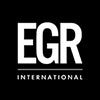


.jpg)






.jpg)


